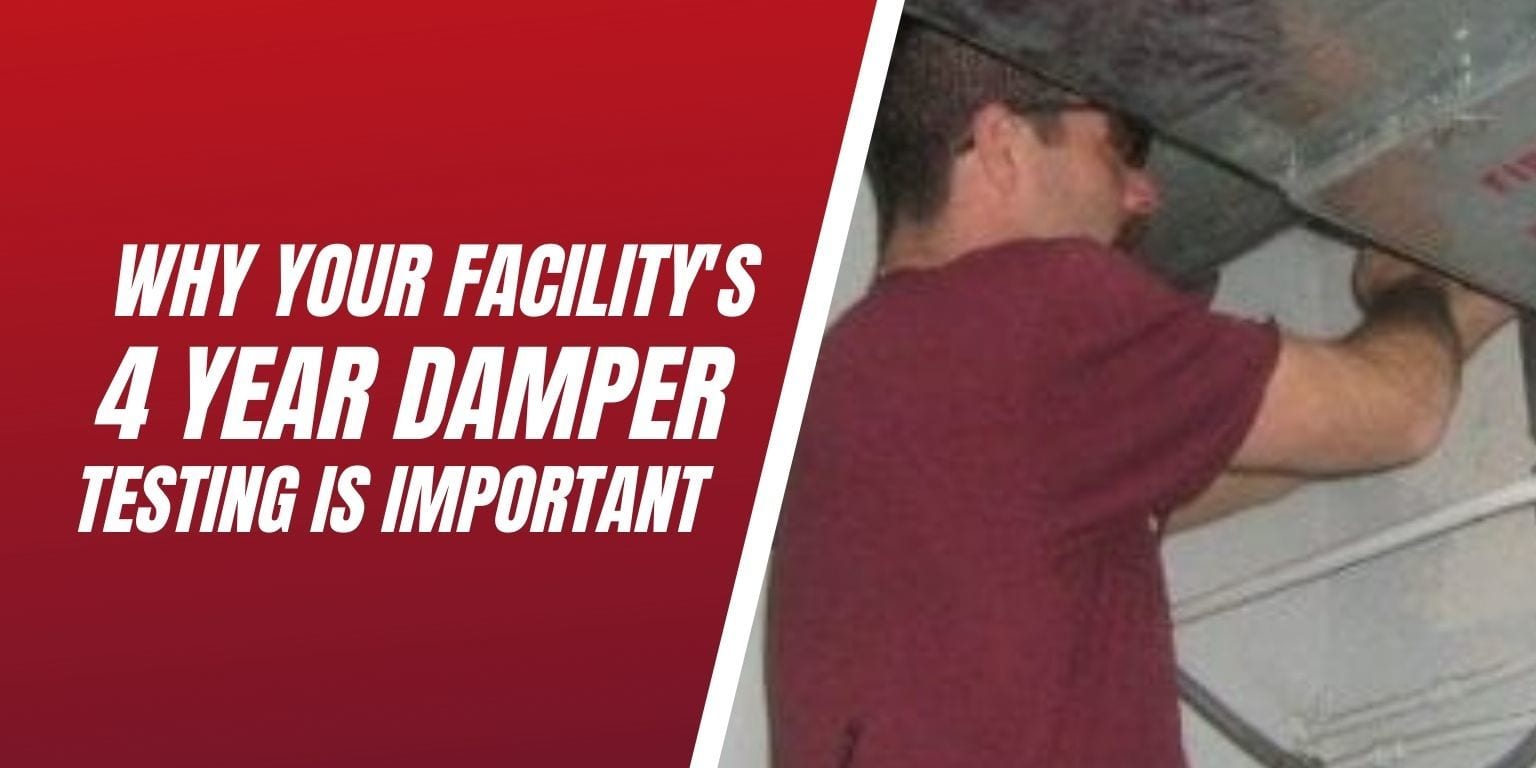
As a facility manager, ensuring that your facility’s fire and life safety systems are properly maintained is just one of the many parts of your job. An important part of your building’s fire protection systems are fire dampers. We are constantly reiterating the importance of fire and smoke damper inspections and repairs in healthcare and long term living facilities, but it’s critical to also stress its equal significance for non-healthcare facilities as well. Making sure your 4 year damper testing is a part of your facility’s fire and life safety plan, is just one of the many ways to protect your building and all its occupants during a fire.
Fire and smoke dampers are designed and installed in the building’s ductwork to help contain both fire and smoke to its original origin. However, since dampers are located within the ventilation system, they are hidden from our view, which means they are probably not on our radar. Not to mention, dampers are only required by NFPA to be inspected every four years (in non-healthcare facilities), which means they are more likely to be out of compliance. It may not seem like a big deal, especially with other fire protection features such as fire doors, and firestopping put in place. But fire and smoke can spread quickly, and one of the fastest ways for a fire to travel is through the ducts. If a damper is out of code compliance, the chances of fire and smoke spreading between compartments increases.
The Importance Of Your Facility’s 4 Year Damper Testing
Fire dampers prevent the spread of fire within the ductwork through fire-resistance rated walls and floors. They work when the heat from the fire causes the normal temperature of a room to rise to about 165 degrees Fahrenheit. That heat causes the fusible link, which is holding the damper open, to melt and allows the damper to be closed.
- Each damper shall be tested and inspected one year after installation.
- The test and inspection frequency shall then be every 4 years
Fire Damper Deficiencies Include:
- Screw in track
- Linkage out of alignment or broken
- Bound in tracks (racking)
- Damper rusted
- Damper propped open
Smoke dampers on the other hand, resist the passage of air and smoke within the ductwork. They are typically operated by a smoke detector, which would also be located in the duct. Once smoke has been detected, the smoke detector sends a signal to the dampers actuator, which uses the jackshaft and linkage to open and close the blades of the smoke damper.
- Each damper shall be tested and inspected one year after installation.
- The test and inspection frequency shall then be every 4 years.
Smoke Damper Deficiencies Include:
- No Air to Actuator
- No Airline to Actuator
- Not Enough Air to Actuator
- No Power to Actuator
- No Power Wired to Actuator
Lastly, there are combination dampers, which are both a fire and a smoke damper in one. These particular dampers are used in areas of the ductwork where both fire and smoke barriers are located to prevent the spread of both fire and smoke.
No matter what the reason may be, if a damper fails it must be repaired as soon as possible, because if a damper doesn’t work properly, then the building, students, faculty and staff are at risk in the event of a fire.
Over all dampers serve as an important part of a building’s fire protection system. They are designed to contain and prevent the spread of fire and smoke throughout the ductwork. But In order to do this they need to be properly installed and maintained. And since dampers have a tendency to fail, they need to be tested and inspected regularly.

